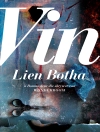Transforming Saints explores the transformation and function of the images of holy women within wider religious, social, and political contexts of Old Spain and New Spain from the Spanish conquest to Mexican independence.
The chapters here examine the rise of the cults of the lactating Madonna, St. Anne, St. Librada, St. Mary Magdalene, and the Suffering Virgin. Concerned with holy figures presented as feminine archetypes—images that came under Inquisition scrutiny—as well as with cults suspected of concealing Indigenous influences, Charlene Villaseñor Black argues that these images would come to reflect the empowerment and agency of women in viceregal Mexico. Her close analysis of the imagery additionally demonstrates artists’ innovative responses to Inquisition censorship and the new artistic demands occasioned by conversion.
The concerns that motivated the twenty-first century protests against Chicana artists Yolanda López in 2001 and Alma López in 2003 have a long history in the Hispanic world, in the form of anxieties about the humanization of sacred female bodies and fears of Indigenous influences infiltrating Catholicism. In this context Black also examines a number of important artists in depth, including El Greco, Murillo, Jusepe de Ribera, Pedro de Mena, Baltasar de Echave Ibía, Juan Correa, Cristóbal de Villalpando, and Miguel Cabrera.
İçerik tablosu
Introduction
Chapter 1: St. Anne, Art, and Conversion
Chapter 2: The Madonna, between Mother and Queen
Chapter 3: The Suffering Mother
Chapter 4: Rebellious Daughters
Chapter 5: Mary Magdalene and the Erotics of Devotion
Conclusion
Appendix
Notes
Bibliography
Index
Yazar hakkında
Charlene Villaseñor Black is a professor of art history and Chicana/o studies at UCLA. She is the author of
Creating the Cult of St. Joseph: Art and Gender in the Spanish Empire.












